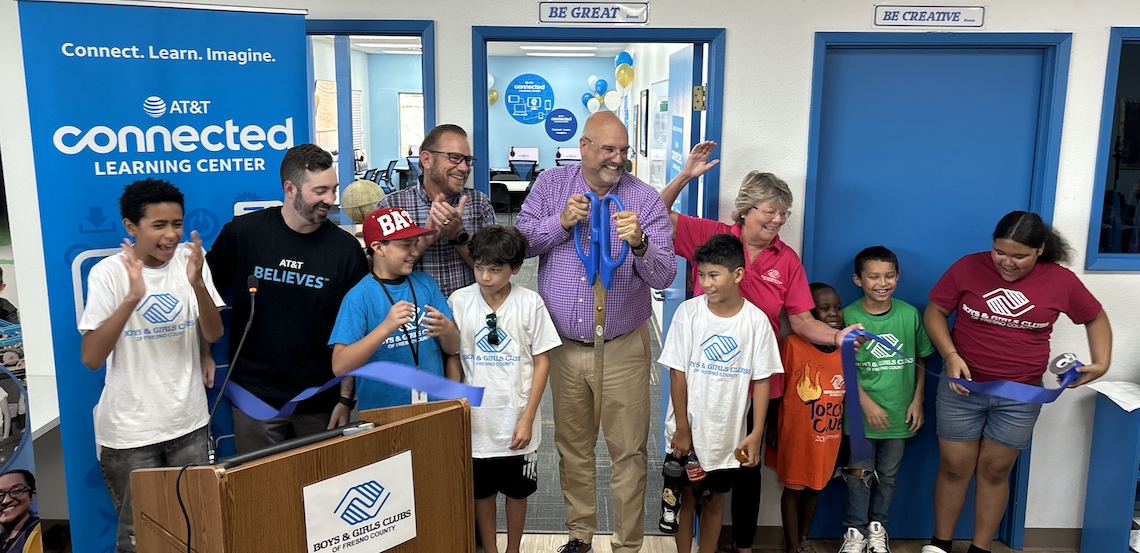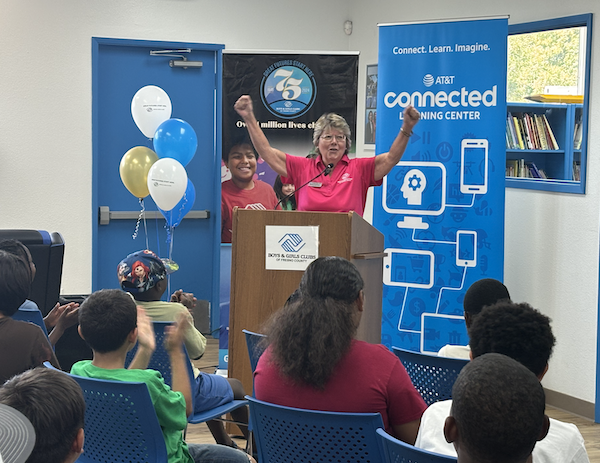
Local officials cut the ribbon on a new Connected Learning Center by AT&T and the Boys & Girls Club of Clovis. August 2024 photo by Ben Hensley
Written by Ben Hensley
On Monday, the Boys & Girls Clubs of Fresno County, along with AT&T, partnered to open the company’s latest Connected Learning Center (CLC), remaining on track to open at least 100 CLCs nationwide by the end of 2027.
Providing children and teens with internet access and wider opportunities to complete homework, seek future employment and network for careers, and, of course, connect with family and friends, AT&T has opened a number of CLCs in various states throughout the country.
The opening of the Clovis CLC will mark the ninth location in California and will provide free educational resources and mentoring opportunities through the use of technology — a big upgrade from how the center operated before.
“We started this process back in March [and] April, identifying one of the Boys & Girls clubs in Fresno County,” said Bryant Milesi, director of external affairs for AT&T. “They were using hotspots before, so our local network team was working with the Boys & Girls clubs and their IT director to bring fiber into the Clovis club location.”
It took several months to get the fiber connected, but the high-speed connectivity for the club’s 15 new computers will greatly benefit the children, attendees of a ribbon cutting said.
Approximately 8% of households in California lack internet access or connected devices required to fully participate in online interactions.
AT&T hopes to help bridge the gap, also known as the “digital divide,” by creating resources like CLCs in communities that lack consistent and reliable internet access.

President of Boys & Girls Clubs of Fresno County Diane Carbray said she thinks the reason the Clovis location was selected was due to some of the challenges faced by local children when it comes to access to technology, as well as other localized risk factors.
“I think part of it has to do with the number of underserved kids in the Central Valley and knowing what our gang population is and the poverty level and unemployment level – all of the things that go into helping underserved kids,” Carbray said. “This was one of the big things that, I think, helped them make the decision.”
Carbray added that access to high-speed internet will help provide the center’s children opportunities to access everything from homework to online gaming, but also said that internet safety will take a major priority, with each computer monitored and social media and other potentially dangerous websites blocked from access to the children at the center.
“We have a whole program for safety,” Carbray said. “The computer wipes itself every night so you can’t continue or seek out people who don’t have the best intentions; we have a program called NetSmartz and that teaches kids what to do and what not to do.”
In addition to its work bringing high-speed internet access to learning centers, AT&T also hopes to see 25 million people receive high-speed internet by 2030, a project which the company will commit $5 billion to complete.







